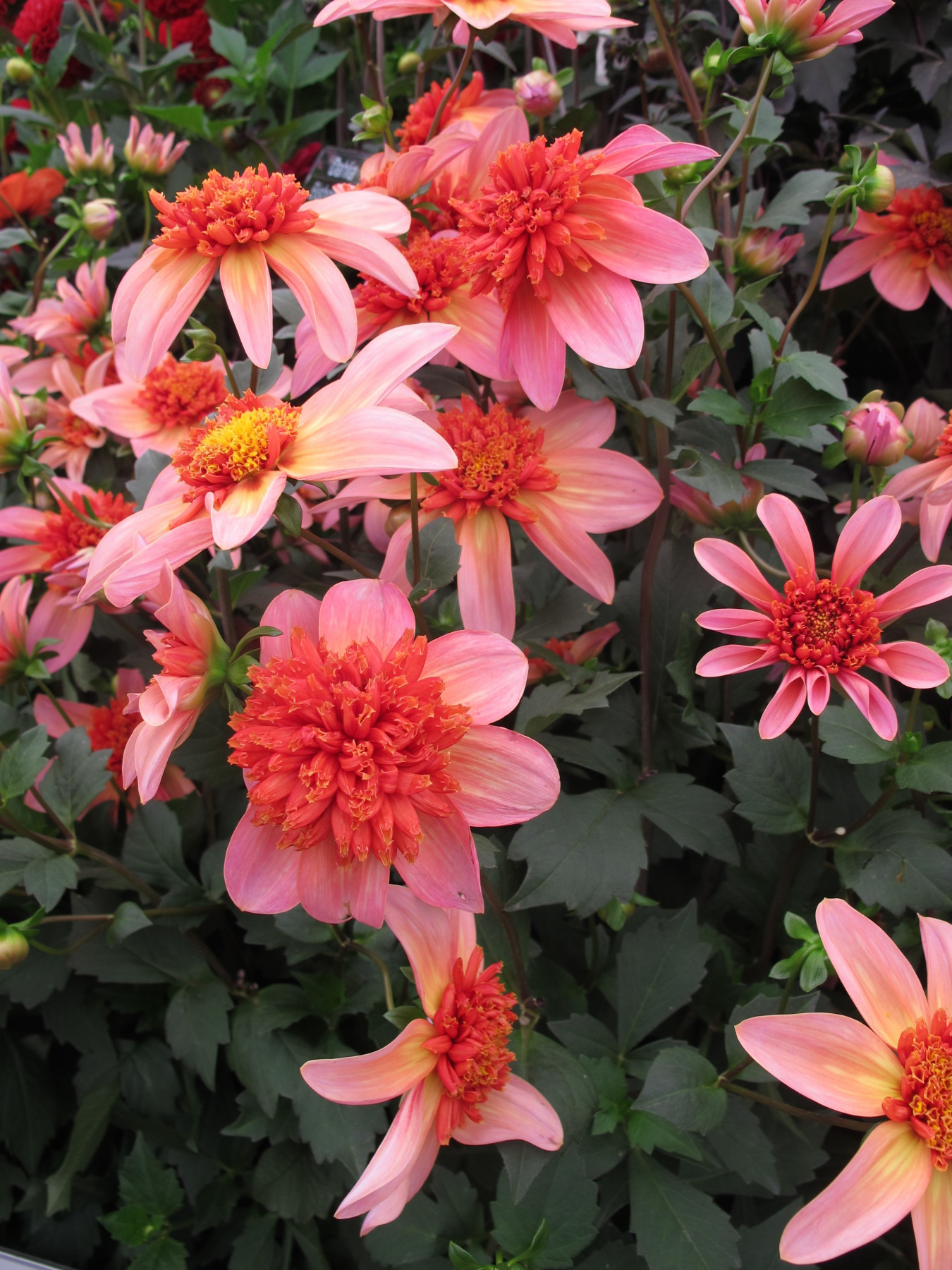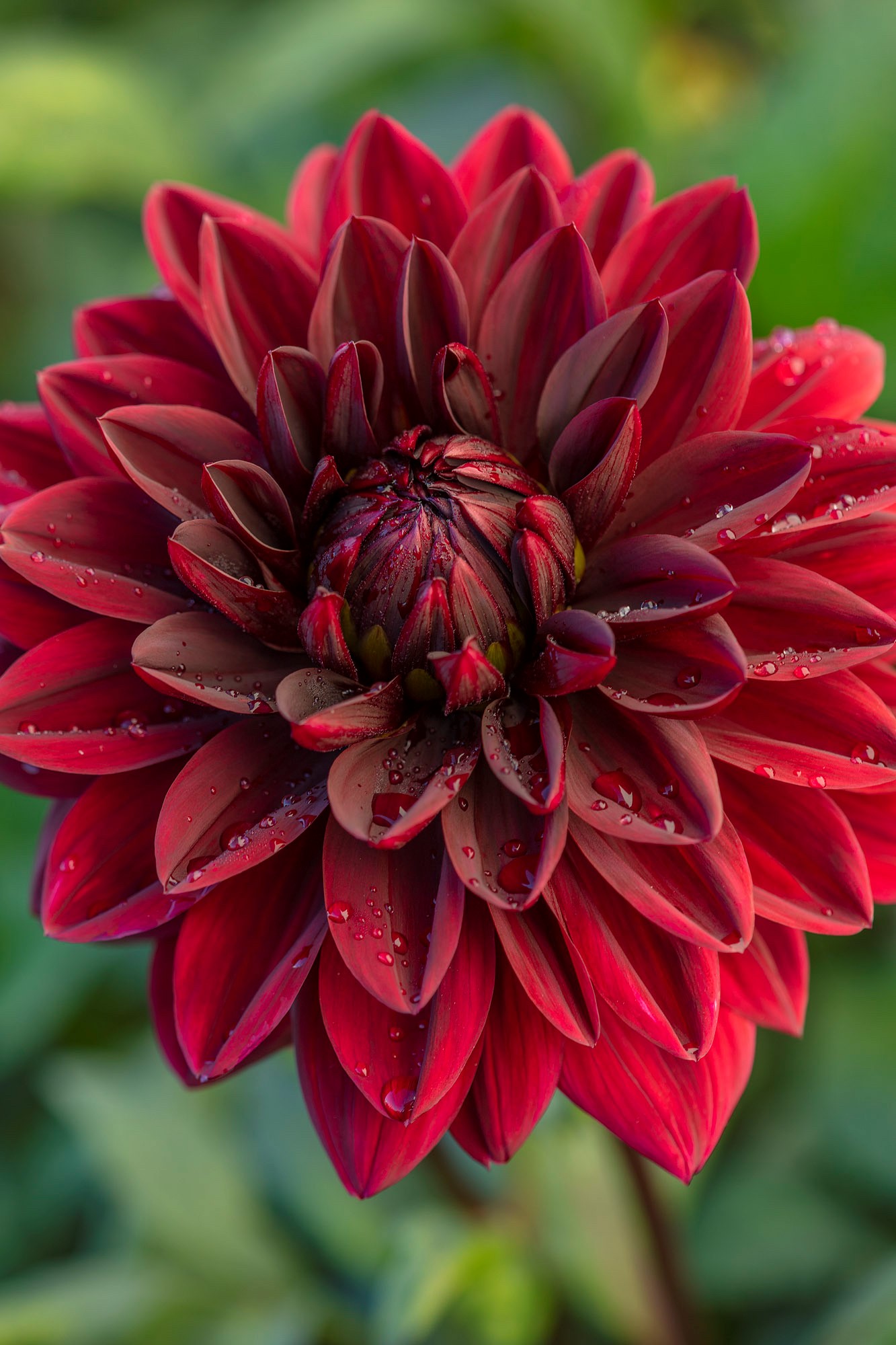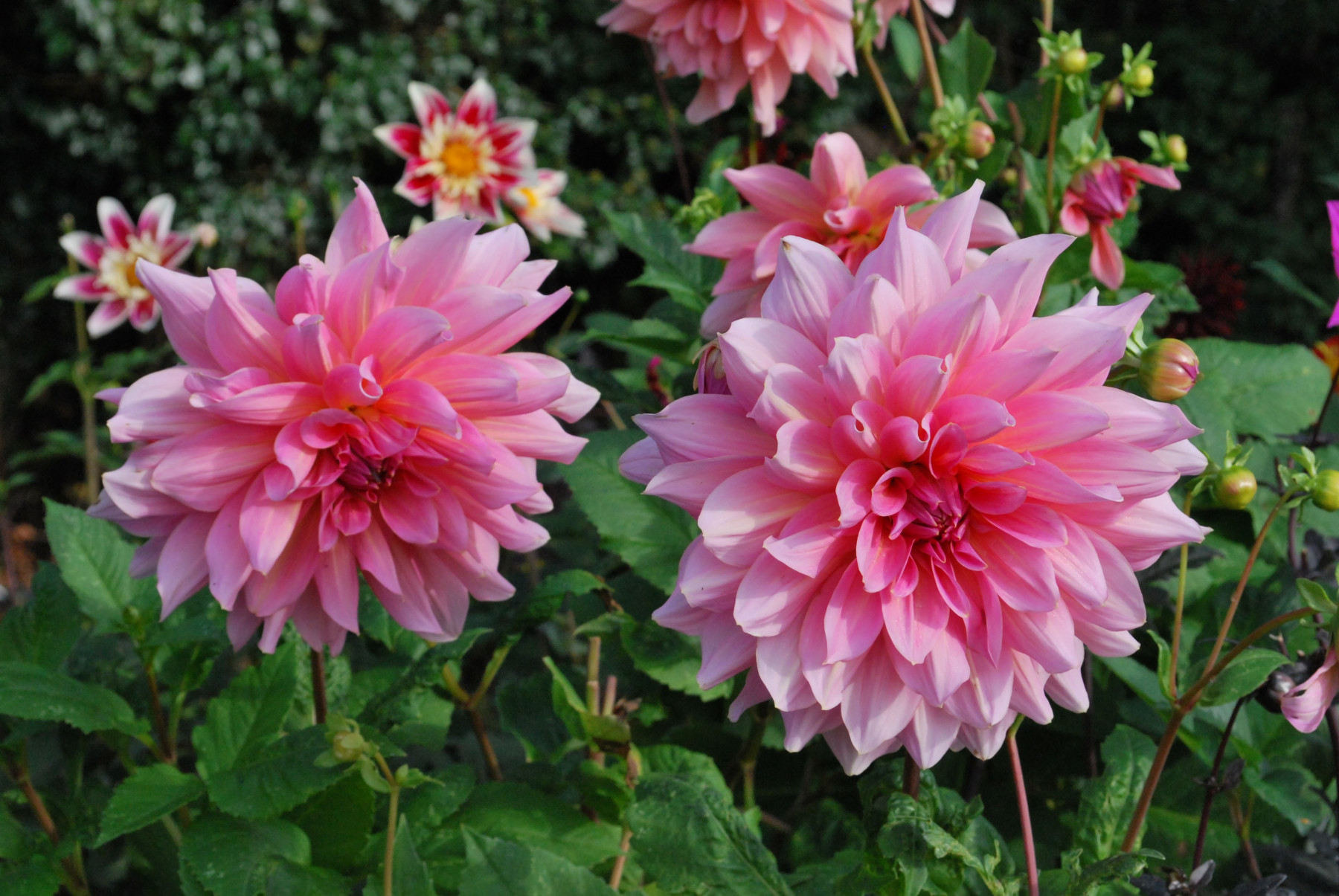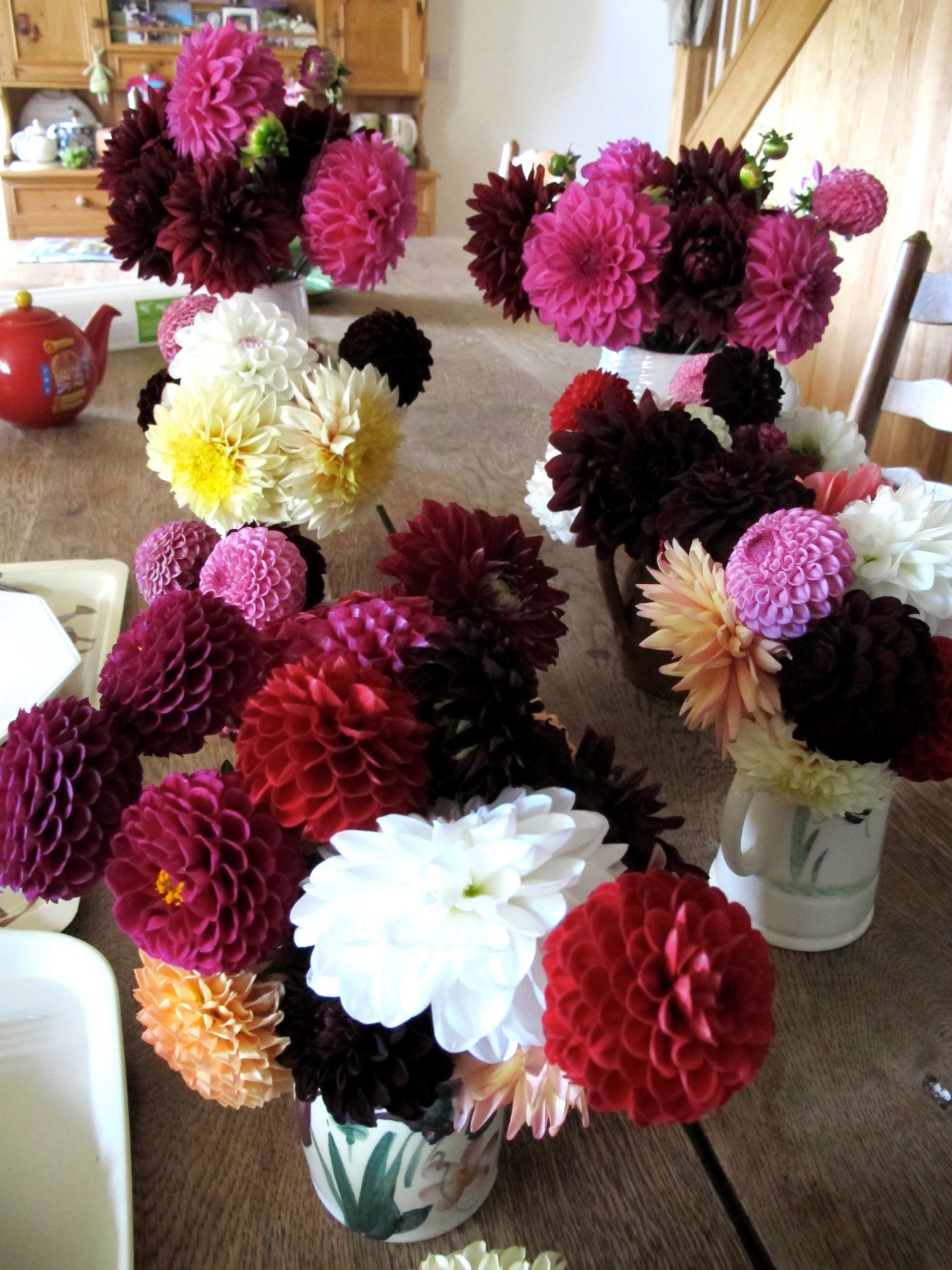
I think I must be a pagan at heart, because the most important day of the year is the shortest day, the winter solstice. This year’s occurred on December 21st and, after that auspicious event, the days get longer and that means more time to garden. One of the first things I do in the New Year, is order some new dahlia tubers, despite the Best Beloved pleading with me not to. In mid-March my Hartley greenhouse becomes my dahlia nursery, because that’s when they’re potted up and given a good water.
After that, my 150 or so are left to their own devices, because dahlias only shoot into life once the weather warms up. They may begin by mid-April and make good plants by mid-May. Whatever they do under glass, they should not be planted outside until the first week of June, because dahlias are one of the most frost-tender and cold-sensitive plants of all. This is because they come from high altitude areas of Mexico and they’re also found in Guatemala, Honduras, Nicaragua, El Salvador and Costa Rica. The twenty or so species are found on higher ground in the narrow strip of land that joins North America to South America.
That narrow strip sits close to the equator, where days and nights are evenly balanced, and that is the dahlia’s strength when it comes to growing them here. They come into their own as the days begin to shorten and temperatures cool and they will soldier on until the first frost. These days I often pick dahlias between mid-July and early November, roughly fifteen weeks. No other plant delivers on that scale. The doubles make fabulous cut flowers and the more you pick, the more buds they produce.

Their real charm is a diversity of flower shape and colour. There are simple singles, anemone-centred pincushions, quilled cactus, soft waterlilies and intricate pompoms among others. The colours range from sultry red-blacks through to pastel shades. Dark shades won’t scorch in hot sunshine, as so many other flowers do. There are harvest golds and warm-yellows, purples, pinks and sunset shades and gardeners are embracing them all. The hardest colour to place is clean-white.
Gardeners no longer go for single-flowered forms, as they once did. These days, they’re even growing giant decoratives with dinneer-plate blooms, such as ‘Otto’s Thrill’ and ‘Penhill Watermelon’. The foliage of over-sized dahlias tends to be coarse and plain-green, but a vase of three or five really makes a statement! I recommend both varieties, along with ‘Labyrinth’. I avoid ‘Emory Paul’ here, because it’s late to flower away from the banana belt of southern England. Great Dixter are able to use it as a hedge!! I’m green-eyed with jealousy.

The sultry blacks are always popular with cut flower ladies and gentleman. In 2021 I discovered ‘Soulman’. The ferny, dark-green foliage supports the darkest ruby-red flowers, with hints of charcoal, and each long-stemmed, modestly-sized flower is a petalled pincushion surrounded by a neat ring of petals. ‘Sam Hopkins’ is another drama-laden dahlia and ‘Karma Choc’, a deep-red with khaki foliage, is the best of the cut flower Karma series – in my eyes – and they do last longer in water.
Dahlia breeding is alive and well across the world. There are English, Dutch, New Zealand and American breeders and they exploit the dahlia’s rich genetic pool. Breeders can collect seed in one year and raise plants in the same year or the next, so new things pop up all the time and they’re often very different from their parents. In earlier times, newly bred dahlia flowers were passed through a series of rings because they had to fit into specific categories to meet exhibition criteria. Many good ones were discarded in the bonkers process, but that’s no longer the case thankfully. Recent additions, not suited to exhibition on the show bench, have included the short, button-neat ‘Totally Tangerine’ and an asymmetrical peachy whirligig named ‘Waltzing Mathilda’. More people grow dahlias in their gardens, than for exhibition.
The sunset shades and deep-reds epitomise the autumn palette, being sultry and slightly decadent. However, the most admired dahlia on my patch was a pastel beauty named ‘Evanah’, a pink and white decorative with a hint of lemon at the centre. Rose Cottage Plants ( www.rosecottageplants.co.uk ) one of my two go-tos, describe ‘Evanah’ as dreamy and that suits it well. Peter Nyssen ( www.peternyssen.com ) also sell a good basic range and both suppliers offer good value. Sarah Raven, although more expensive, often has very interesting dahlias as well. I never buy cuttings, just tubers. I do take my own cuttings though.

There’s a dahlia for everyone, even those who only have a balcony or small patio. The Dark Angel Series has very intricate almost-black foliage and bee-friendly single flowers aplenty. My favourite, ‘Pulp Fiction’, is named after the red nail varnish, Rouge Noir, worn by Uma Thurman in the 1994 film. Oh. I do wish I was a vamp, but my nails are usually broken and dirty. ‘Pulp Fiction’ is fabulous in a pot and it reaches less than a foot in height. The Happy Days Series is taller, nearer two feet, and the seriously neat flowers have a ring of even petals set round a middle that darkens when the bees get busy. The foliage is also dark. Happy Days PINK, PURPLE, SINGLE FLAME, SINGLE PRINCESS and SINGLE WINK have all been given AGMs by the RHS dahlia panel. These often pop up as plants in garden centres.
Darker-leafed dahlias are more prone to slug and snail damage so, if you are using a pot, don’t use one with a rim that arches downwards because slugs and snail will roost underneath the lip. The best method is a dusk patrol because, if slugs are about, they’ll be feeding just before dark. Gloves and big boots are a better answer than eco-harmful slug pellets.
Potted dahlias need feeding every ten days or so, with a liquid tomato food. Dahlias in the ground do not need a rich diet, because this will promote foliage at the expense of flower. Add a small handful of blood, fish and bone to the planting hole and, if you think it’s needed, you can apply one high-potash feed, such as Vitax Q4, on a damp day in June. Once a young dahlia is established, it can resist summer droughts due to having tuberous roots, so there’s no need to water either.

There is always a debate about whether to leave dahlias in the ground or not. I lift mine very year, having lost the lot during the severe winter of 2012. Leaving them in leaves a gap in the garden until July, because they come up later than most perennials. When left in, they also produce
large tuber masses and these produce less flower, so regular division is needed in any case.
I lift mine a couple of weeks after they are frosted and they are stored under the greenhouse bench, in airy large bread trays, under dry compost. They stay there, frost-free, until March and then they’re divided (if needed) just as they start into growth. My pots are hardened off outside, from mid-May onwards, but I fleece them if a frost is a forecast.
I also grow mine in dedicated dahlia beds on my allotment, because young dahlia plants find it difficult to grow surrounded by perennials in full growth. Great Dixter, in East Sussex, create special gaps for them, by removing spring bedding like tulips and wallflowers. That works.



